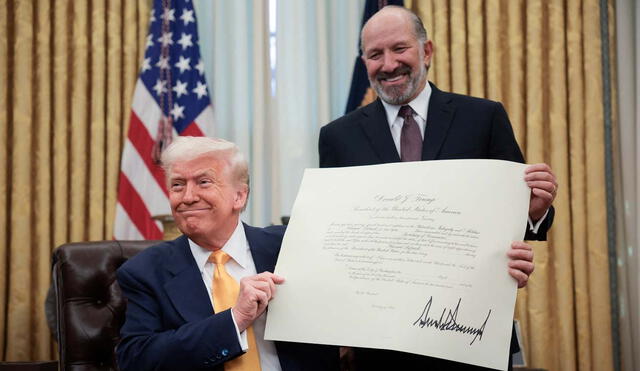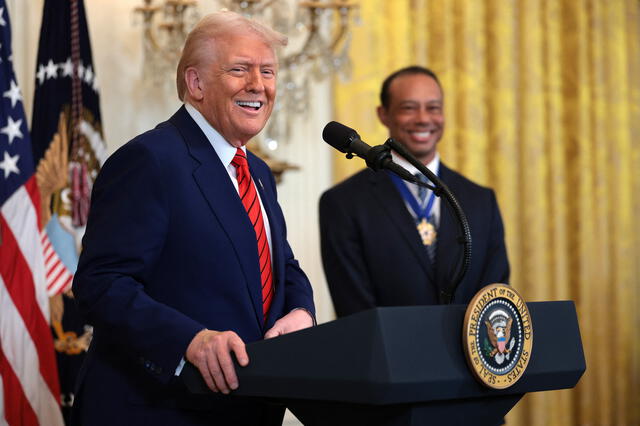Donald Trump signs memo on digital taxes and tech restrictions for Cuba and Venezuela
The U.S. has introduced new restrictions on technology exports to several countries, including Cuba, Venezuela, China in a move to protect national security and prevent these nations from accessing sensitive American technologies.

In recent developments, the United States has implemented new restrictions on its technology exports to countries deemed as "foreign adversaries," which include Cuba, Venezuela, China, Russia, and Iran. This move is part of a broader strategy to limit access to sensitive American technologies, particularly in areas like artificial intelligence, semiconductors, and biotechnology.
These restrictions come under the executive order signed by former President Donald Trump, emphasizing the importance of safeguarding U.S. infrastructure and intellectual property. While the specific measures and their scope remain unclear, the order signals a significant escalation in the U.S.'s efforts to prevent foreign nations from exploiting its technological advancements.
Trump considers tariffs to counter digital services taxes
President Donald Trump announced that he would sign a memorandum on Friday allowing for potential levies in response to digital services taxes imposed by some countries on U.S. tech giants. This move is part of the ongoing effort to address global trade imbalances through tariffs.
The memorandum will instruct the U.S. Trade Representative's office to propose retaliatory actions, such as tariffs, against countries that impose digital taxes on U.S. tech companies like Alphabet Inc. and Meta Platforms Inc., according to individuals familiar with the details.
“They’re treating us terribly with digital taxes in other countries. We’ll be announcing it soon,” Trump told reporters on Friday.
The memo, which remains confidential until it is made public, broadly addresses digital trade issues. However, it is not expected to implement tariffs immediately, nor does it provide a clear timeline for when such duties could take effect, according to the sources.

Since day one at the White House, Trump signed dozens of executive orders. Photo: AFP
This move responds to a longstanding concern for Trump, dating back to his first term in office. In 2019, the U.S. Trade Representative launched investigations into the tax systems of France, Italy, Spain, India, and others, concluding that the taxes were discriminatory and unfairly impacted American firms.
While some countries have withdrawn their digital services tax plans in favor of participating in global talks for a minimum tax on tech companies, those negotiations have repeatedly stalled.
According to the Computer and Communications Industry Association, around 30 countries, including key U.S. trading partners like the U.K. and Canada, have either adopted or proposed digital services taxes in recent years. Canada's digital services tax took effect in 2024.
Restrictions on U.S. technology to countries like Cuba and Venezuela
Trump signed another executive order aimed at restricting access to U.S. technology, particularly in the realm of artificial intelligence, to what he refers to as "foreign adversaries," including countries such as Cuba, Venezuela, Iran, Russia, and China.
The executive order does not provide detailed measures on how access to U.S. technology will be restricted for these "foreign adversaries."
Under the designation of "foreign adversaries," the order identifies China, Hong Kong, Macao, Cuba, Iran, North Korea, Russia, and the "regime of Venezuelan politician Nicolás Maduro," as outlined in the text.
Trump justifies his decision by stating that "economic security is national security," emphasizing that the country must protect its critical infrastructure and sensitive technologies, from artificial intelligence to semiconductors and advancements in biotechnology.
The executive order places particular focus on China, noting that companies linked to Beijing have used investments in the U.S. to gain access to key technologies and that the Chinese government is leveraging American technology to modernize its military apparatus.
Since his return to the White House on January 20, Trump has announced various trade restrictions with the goal of balancing the trade deficit and pressuring countries like Mexico and Canada to make concessions on immigration and drug trafficking efforts.
He has imposed a 10% tariff on China, adding to the tariffs already applied during his first term (2017-2021).
These new restrictions come after former President Joe Biden took steps to limit the export of semiconductors and artificial intelligence technology to China, prompting Beijing to respond with export controls on graphite, a critical material for electric vehicle batteries.












